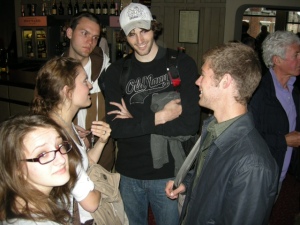Arts pros love to talk about the various reasons audiences are disappearing, but few are willing to discuss the industry’s less than professional approach to marketing. Here are a few widely held misconceptions that I think should be part of the discussion.
Myth 1. Marketing is Common Sense
Reality: Marketing is a profession. Its practitioners benefit from in-depth academic study, insight into communication theory, practical business experience, knowledge of current trends and innovations, ongoing professional development and, as with all professions, plenty of accumulated expertise. Marketing is no more common sense than finance, law, engineering or playing the violin.
Myth 2. Executive Leadership Confers Marketing Expertise
Reality: The belief that marketing is common sense allows many arts leaders to think they possess marketing expertise by virtue of their rank. But arts leaders seldom arrive at their positions with enough knowledge or legitimate professional experience to claim such acumen. Most are under-prepared amateurs who, fit or not, make high-stakes decisions that impact the health and sustainability of their organizations.
Myth 3. Arts Marketing is Like Business Marketing
Reality: Arts marketing is unique, unusual and unlike business marketing in many significant respects. While business marketing tends to be current, customer-centered, rational and bottom line-driven, arts marketing is tradition-bound, self-centered, subjective and driven by multiple, overlapping and often contradictory institutional goals and objectives.
Myth 4. The Arts Do A Fairly Good Job of Marketing
Reality: The arts have been losing audiences steadily for the last three decades and all the while relying on the same loopy, hackneyed, repetitive, self-indulgent – and sometimes just plain idiotic – communications content: “Celebrate Live Performance!” “Take a Journey of the Imagination” “If Music be the Food of Love…” “Experience the Magic” “It’s a Zany, Madcap Romp!” etc., etc., etc.
Myth 5. Technology is the Answer
Reality: Content is the answer. Always has been. Technology is a tool for delivering content so it’s more akin to your mail carrier than anything else. If you don’t expect your mail carrier to sell tickets, you shouldn’t expect technology to do it either.
Myth 6. Marketing is a Creative Enterprise
Reality: Marketing has a lot more to do with math and science than it does with creativity. Creativity is to marketing what paint color is to building a house. It’s an important and necessary part of the process, but it’s of no use whatsoever while the architects, engineers and builders are drawing up the plans.
Myth 7. We’re Selling Tutus, Tuxes and Tights
Reality: A casual observer could be forgiven for believing this is true, but the arts are actually selling customer experiences, which means – though you’d never know it by looking at our marketing – that it’s all about the customer. The frivolous, clichéd, self-flattering trappings we use to decorate our marketing content are old-fashioned insider shorthand that curious outsiders often find obscure and off-putting.
Myth 8. Brainstorming is the Same as Strategy
Reality: Putting a group of artsy insiders in a conference room and having them dream up creative ways to tell the world about upcoming events is the worst possible approach to developing strategic sales content – yet it’s the way we do marketing in the arts. A more professional approach would be to identify targets, gather objective market intelligence about their needs, wants and desires, then construct rational persuasive appeals that describe how the products will satisfy their yearnings.
Myth 9. Self-Congratulatory Bombast is a Good Way to Sell Tickets
Reality: This may have been true back in the olden days when there were a lot of people who thought we were as wonderful as we think we are, but it doesn’t appear to be true today. New audiences need to be told explicitly why our wonderfulness is of value to them or, in other words, how our products will satisfy their yearnings.
Myth 10. Audiences Need the Arts
Reality: While it may be true on a collective, philosophical level, it’s not true on a pragmatic, individual level. No single person needs any particular arts organization so if an organization’s “you need us” attitude creeps into its communications content, no matter how coy or clever the packaging may be, the message ends up being false, presumptuous, and condescending.
UPDATE: Followup post – “Ten More Marketing Myths That Arts Leaders Still Believe”





